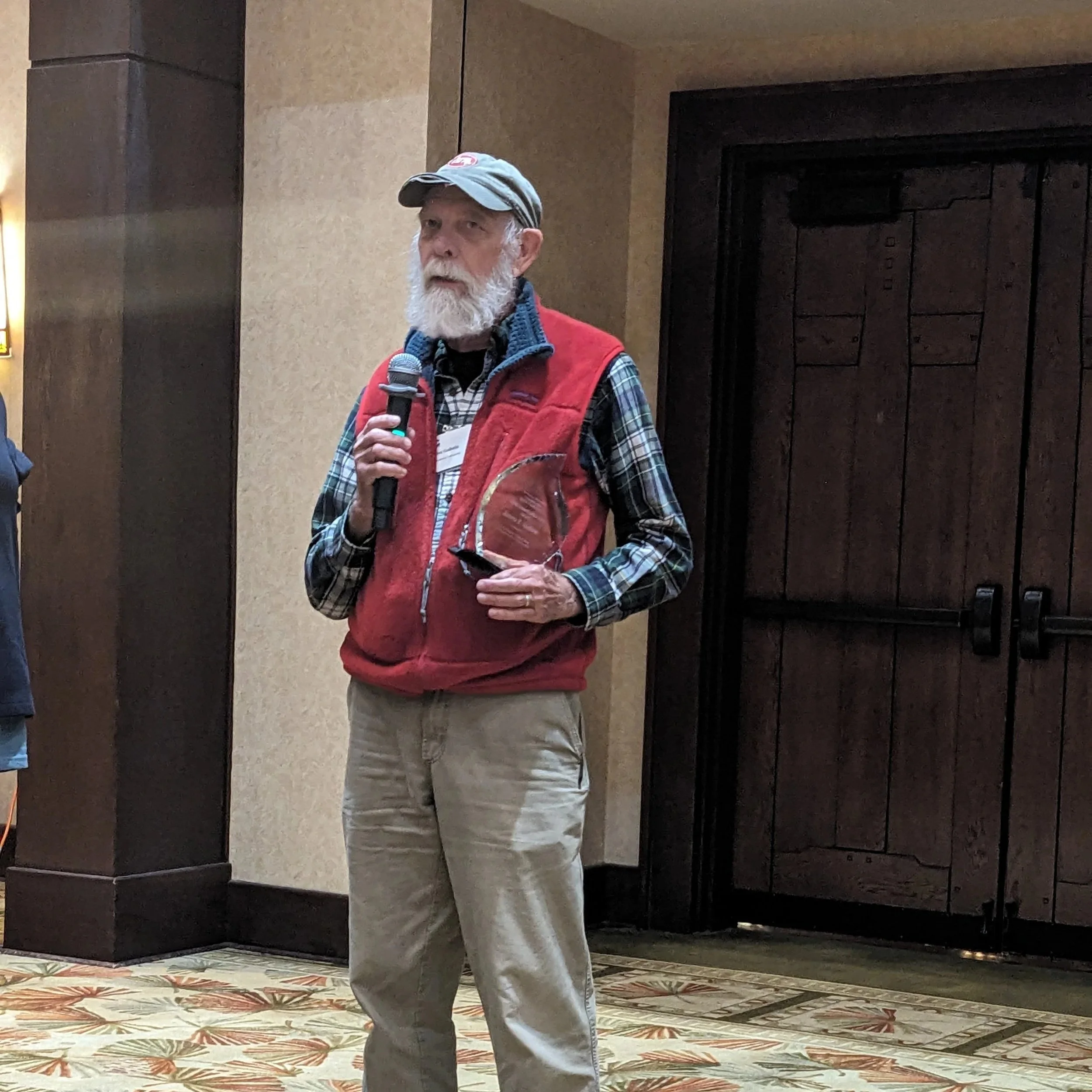2025 Winner - Jim Godwin
2025 Conservation Hero Award Winner: Jim Godwin
Jim Godwin received a MS in zoology under Dr. Robert Mount at Auburn University and spent time in Texas and Florida before returning to Alabama to join the Alabama Natural Heritage Program as the Aquatic Zoologist, a position held since 1992. The ALNHP began under The Nature Conservancy and transferred to Auburn University in 2006, where it is now housed in the Museum of Natural History. Most of Jim’s time is spent on surveys, invento- ries, and monitoring of imperiled aquatic species. Having also worked with freshwater mussels, snails, and fish, Jim’s true interest and expertise is with amphibians and reptiles, particularly freshwater turtles. I can't confess to know how many publications the Jim has published throughout his career, but ResearchGate lists at least 37, plus he has helped to write IUCN Red List Assessments for many species including the Alabama map turtle, black-knobbed sawback, flattened musk turtle, Alabama red-bellied turtle, and others.
Jim has been a staple of Alabama herpetological conservation for decades. He has collaborated with USFWS, state agencies, non-profits (e.g., ARC, Tangled Bank Conservation, Orianne Society, and the Turtle Survival Alliance), universities (Auburn, Alabama, Southern Miss, etc.). Jim has worked tirelessly on the indigo snake reintroductions into Conecuh National Forest and spent a career protecting Alabama endemics like the flattened musk turtle, Alabama waterdog and Red Hills salamander.
Jim has floated hundreds of miles of river in the state sampling for eDNA of hellbenders, flattened musk turtles, Alabama waterdogs, and more in collaboration with USFWS, riverkeepers and the state. He has surveyed for Mississippi Dusky Gopher Frogs in SW AL. He has caught more Alabama red-bellied turtles than almost anyone else, a species that very little information exists for. He has also participated in multiple SWAPs to evaluate the listing of Alabama species. Also his Toyota Land Cruiser is iconic. He prefers to fly under the radar, but his contributions to Southeastern herpetofauna cannot be overstated

